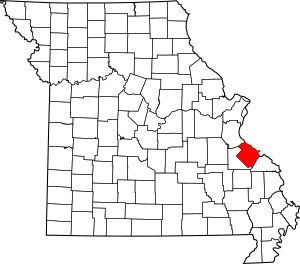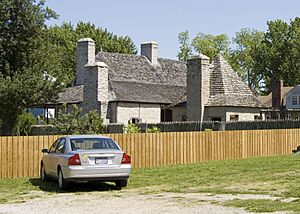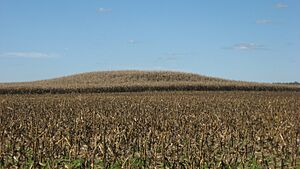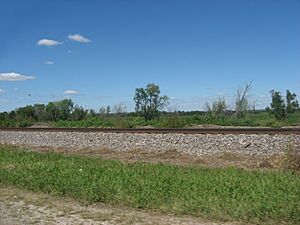National Register of Historic Places listings in Ste. Genevieve County, Missouri facts for kids
Have you ever wondered how important old buildings and places are kept safe for the future? In the United States, there's a special list called the National Register of Historic Places. It's like a hall of fame for buildings, sites, and objects that are super important to American history, architecture, archaeology, engineering, or culture.
When a place is added to this list, it means it's recognized as a valuable part of our past. This helps protect it and makes people more aware of its history. Ste. Genevieve County in Missouri has several amazing places on this list. Some are even more special and are called National Historic Landmarks, which are the very best of the best!
There are 6 different places in Ste. Genevieve County that are on the National Register. Two of these are National Historic Landmarks! Let's explore some of these cool historic spots.
Historic Places in Ste. Genevieve County
Louis Bolduc House
The Louis Bolduc House is a very old and important house located at 123 South Main Street in Ste. Genevieve. It was built in the 1790s by Louis Bolduc, a wealthy lead miner and merchant. This house is special because it's a great example of traditional French colonial architecture from that time. It's built with a unique method called "poteaux-en-terre," which means "posts in the ground." Imagine big wooden posts standing upright in the earth, forming the walls!
The house has been carefully preserved to look much like it did hundreds of years ago. It helps us understand what life was like for early French settlers in Missouri. It was added to the National Register of Historic Places in 1969 and is also a National Historic Landmark.
Common Field Archaeological Site
The Common Field Archaeological Site is not a building, but a very old piece of land that holds secrets from the past. It's located on the northern side of Cotton Woods Road, near U.S. Route 61. This site is important because it shows us where ancient people lived and farmed.
Archaeologists, who are like history detectives, have found evidence here of early Native American communities. These communities used to share large farming areas, which is why it's called a "common field." The site includes a platform mound, which is a raised area of earth often used for important buildings or ceremonies by ancient cultures. It was listed on the National Register in 1969.
Jacques Dubreuil Guibourd House
Another fascinating French colonial home in Ste. Genevieve is the Jacques Dubreuil Guibourd House. You can find it at the corner of 4th and Merchant Streets. This house was built around 1806 by Jacques Dubreuil Guibourd, a judge and important person in the community.
Like the Bolduc House, it shows off the unique French building style of the era. It's known for its "poteaux-sur-solle" construction, which means "posts on a sill." This is similar to the "posts in the ground" method, but the posts rest on a stone foundation instead of directly in the earth. This house gives us a peek into the daily lives of early American settlers with French roots. It joined the National Register in 1969.
Kreilich Archaeological Site
The Kreilich Archaeological Site is another important historical area, located along U.S. Route 61 where Saline Creek meets an old part of the Mississippi River. This site is special because it contains evidence of very old human activity, possibly going back thousands of years.
Archaeological sites like Kreilich help scientists learn about the people who lived in this region long before modern cities existed. They can find tools, pottery, and other clues that tell us about their way of life, what they ate, and how they interacted with their environment. This site was added to the National Register of Historic Places in 1969.
Ste. Genevieve Historic District
The Ste. Genevieve Historic District is not just one building, but a whole area of the city that is considered historically important! It covers most of central Ste. Genevieve, including many old buildings and even some of the farmlands near the river.
This district is incredibly special because it has many buildings from the 1700s that show French colonial architecture. It's one of the best places in the United States to see how early French settlements looked. Because of its unique history and preserved buildings, it was recognized as a National Historic Landmark District in 1966.
Later, in 2002, a larger part of the Ste. Genevieve Historic District was also added to the National Register. This second listing includes buildings from the 1800s and 1900s, showing how the town grew and changed over time. It helps us understand the architectural styles and history of the city through different periods.







